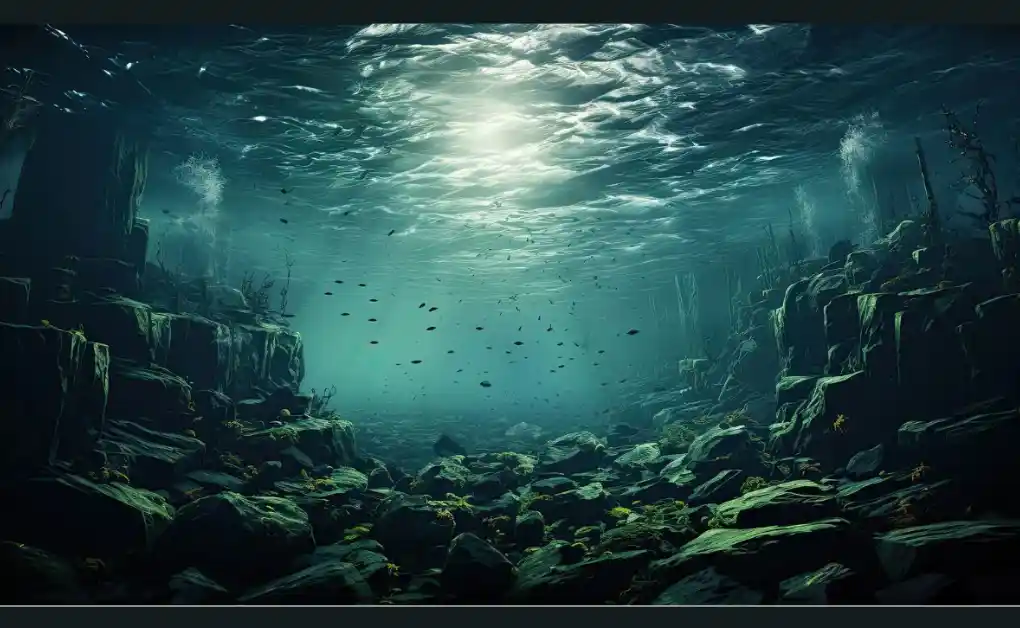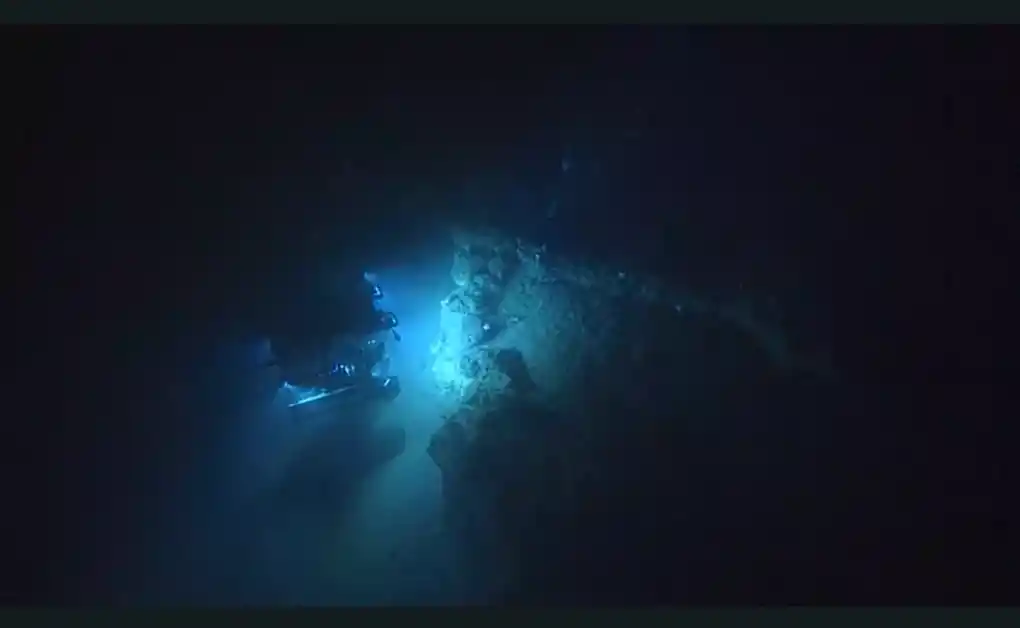Researchers exploring the dark, lightless depths of the Pacific Ocean have made a groundbreaking dark oxygen discovery that could challenge long-standing beliefs about how oxygen is produced on Earth. Until now, scientists thought that oxygen was only generated through photosynthesis, a process that relies on sunlight. However, the discovery of oxygen being produced in the deep ocean raises new questions about the origins of life and the processes that sustain it.

The Discovery of Dark Oxygen
The research team, led by Professor Andrew Sweetman from the Scottish Association for Marine Science, published their findings in Nature Geoscience, shedding light on the discovery of dark oxygen. Unlike traditional oxygen production, which occurs in the presence of sunlight, this new form of oxygen appears to be generated in total darkness. The scientists observed elevated oxygen levels near electrically charged mineral formations called polymetallic nodules on the ocean floor, suggesting an alternative pathway for dark oxygen production.
What is Dark Oxygen?
Dark oxygen refers to the oxygen that is generated in the absence of sunlight, deep in the ocean’s dark depths. Traditionally, oxygen has been believed to form through photosynthesis, where sunlight is used by plants, algae, and cyanobacteria to split water molecules into hydrogen and oxygen. However, the newly discovered phenomenon suggests that oxygen can also form through non-photosynthetic processes in the deep ocean.
How is Dark Oxygen Produced in the Deep Ocean?
The research indicates that dark oxygen production may be facilitated by polymetallic nodules scattered across the ocean floor. These nodules, which can vary in size from tiny particles to as large as potatoes, contain metals such as manganese, nickel, and cobalt. Their electric charge allows them to function like “batteries in a rock,” as described by Sweetman. The nodules may produce oxygen through a process called seawater electrolysis, where the electric charge is used to split seawater into hydrogen and oxygen.
Researchers found that some of the nodules generate up to 0.95 volts of electricity. When several nodules are in proximity, they can produce enough voltage to initiate seawater electrolysis, which requires approximately 1.5 volts—the same amount found in a standard AA battery. The discovery was confirmed through tests conducted on the seafloor as well as aboveground experiments, both of which showed increased oxygen levels near the polymetallic nodules.
Implications for Our Understanding of Oxygen Production
Traditionally, scientists believed that oxygen production began around three billion years ago when ancient microbes known as cyanobacteria began performing photosynthesis. According to Nicholas Owens, director of the Scottish Association for Marine Science, the possibility of an alternative oxygen source could require “a radical rethink” of our understanding of Earth’s early environment and the development of life. If dark oxygen in the ocean contributed to early oxygen production, it may change how scientists approach questions about the origins of aerobic life.
“I think we therefore need to revisit questions like: where could aerobic life have begun?” Sweetman said in a news release. This discovery challenges the conventional view that photosynthesis was the sole contributor to the rise of oxygen levels on Earth, opening new avenues for research into the darkest parts of our planet.
Dark Oxygen and Deep Ocean Mining: A Potential Impact
The presence of dark oxygen could have significant implications for deep-sea mining practices. Polymetallic nodules, which appear to play a role in oxygen discovery in the deep ocean, are also valuable for their metal content, including manganese, nickel, and cobalt—elements used in the production of lithium-ion batteries for electric vehicles and consumer electronics.
Franz Geiger, a chemistry professor from Northwestern University who contributed to the study, pointed out that there is a vast concentration of these nodules in an area known as the Clarion-Clipperton Zone in the Pacific Ocean. He noted that the metals contained in these nodules could potentially meet global energy demands for decades. However, Geiger emphasized that mining activities would need to be carefully managed to avoid disrupting the deep-sea ecosystems that may rely on the oxygen produced by these nodules.

“If deep-sea mining becomes an opportunity that’s being pursued, we need to ensure it’s done at a level and frequency that is not detrimental to life down there,” Geiger said in an interview Previous exploratory mining missions conducted in the 1970s and ’80s resulted in long-term impacts on marine life, with areas previously mined showing minimal signs of recovery even after 40 years.
The Role of Polymetallic Nodules in Dark Oxygen Production
Polymetallic nodules are mineral-rich deposits scattered on the ocean floor. Their ability to generate electricity could make them key players in dark oxygen production. The electric charge of these nodules may facilitate the splitting of seawater molecules, producing oxygen in the dark and deepest parts of the ocean where photosynthesis is impossible.
During the study, scientists conducted multiple tests both underwater and in the lab. The consistent findings across different environments showed that oxygen levels rose near these nodules, suggesting a direct link between the nodules and dark oxygen formation. This alternative oxygen production process could have provided an early source of oxygen for the development of aerobic life, independent of sunlight-driven photosynthesis.
Rethinking the Origins of Life and Oxygen on Earth
The discovery of dark oxygen in the deep ocean challenges the long-held assumption that sunlight was necessary for the initial production of oxygen on Earth. This raises new questions about how aerobic life may have evolved. If the process of seawater electrolysis played a significant role in early oxygen production, it could mean that life was able to adapt to and thrive in environments without sunlight much earlier than previously thought.
The research suggests that oxygen could have been present in deep ocean environments long before the appearance of photosynthetic organisms, potentially altering the timeline of Earth’s oxygenation and the development of complex life forms. This discovery may also inform the search for life on other planets, where similar conditions could allow for oxygen production in the absence of light.
How Does the Discovery Affect the Future of Deep-Sea Exploration?
The finding of dark oxygen in the Pacific Ocean highlights the need for more comprehensive studies of the deep ocean environment. Understanding the mechanisms behind dark oxygen production could improve predictions about how deep-sea ecosystems respond to changes such as temperature shifts, mining activities, or other human interventions. With an increasing interest in deep-sea mining for rare minerals, it is crucial to weigh the benefits against potential ecological risks.
Conclusion
The dark oxygen discovery made by researchers exploring the Pacific Ocean floor opens up a new understanding of oxygen production on Earth. The fact that oxygen may be produced in the darkest depths of the ocean challenges traditional theories that only photosynthesis could generate oxygen. This groundbreaking finding prompts a reevaluation of where and how aerobic life could have originated, potentially reshaping the scientific understanding of Earth’s early history and life’s development.
As scientists continue to investigate this phenomenon, it could have far-reaching implications, not only for deep-sea mining practices but also for theories about the existence of life in extreme environments on other planets. The discovery marks a new chapter in oceanographic research, showing that even in the planet’s deepest and darkest regions, unexpected processes can contribute to sustaining life.
FAQs
What is dark oxygen?
Dark oxygen refers to oxygen produced in the absence of sunlight, as observed in the deep ocean, potentially through processes like seawater electrolysis facilitated by polymetallic nodules.
How is dark oxygen produced in the ocean?
Researchers believe dark oxygen production occurs through the electrochemical activity of polymetallic nodules on the ocean floor, which may split seawater into hydrogen and oxygen.
Why is the discovery of dark oxygen significant?
The discovery of dark oxygen challenges the traditional understanding that oxygen could only be generated through photosynthesis, suggesting alternative pathways for oxygen production on Earth.
Could dark oxygen affect deep-sea mining practices?
Yes, since polymetallic nodules contribute to dark oxygen production, mining these resources could impact oxygen levels and marine ecosystems in the deep ocean.
What does this discovery mean for the search for life on other planets?
The finding that oxygen can be produced without sunlight suggests that life may be possible in extreme environments, such as the subsurface oceans of other planets or moons.